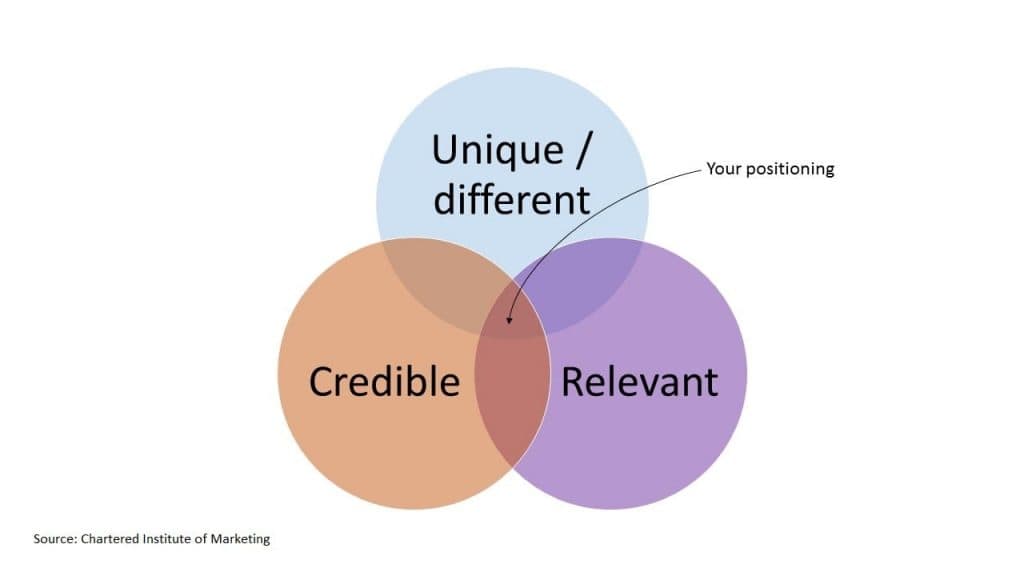Building a Brand Strategy: Essentials for Long-term Success
Building a brand strategy is essential for long-term success. The brand strategy encompasses a range of activities to create a solid and distinguishable brand identity that resonates with the target audience. It is a comprehensive plan that outlines how a company will position itself, communicate its values, and differentiate itself from competitors.
A well-crafted brand strategy helps establish a solid foundation for all marketing efforts, increases brand recognition and loyalty, and creates a unique brand positioning. It is crucial in driving customer engagement, expanding market share, and ultimately contributing to sustainable business success.
The essential components of a brand strategy include brand identity, defining the target audience, brand positioning, brand messaging, conducting competitive analysis, and identifying appropriate marketing channels. These elements work in tandem to create a cohesive and compelling brand experience for customers.
Developing a brand strategy for long-term success involves conducting market research to understand the target market and competitors, defining brand values and purpose, creating a unique brand identity that reflects the brand's essence, crafting effective brand messaging and storytelling, and implementing consistent branding across all marketing channels.
Measuring and evaluating the success of a brand strategy is vital to track performance and make necessary adjustments. Identifying the right metrics, such as brand awareness, customer loyalty, and market share, allows businesses to gauge the effectiveness of their brand strategy. Regular monitoring enables companies to optimise their brand strategy and adapt to market changes.
By prioritising and investing in a well-defined and comprehensive brand strategy, businesses can establish a strong brand presence, cultivate customer trust, and achieve long-term success in the marketplace.
Key takeaways:
- Brand strategy drives long-term success: Developing a comprehensive brand strategy is crucial for businesses to grow and thrive in the market.
- Brand identity and positioning are critical: Defining a unique brand identity and positioning helps businesses differentiate themselves from competitors and attract their target audience.
- Consistency is crucial to brand success: Implementing consistent branding across all channels and regularly measuring and evaluating brand strategy allows businesses to adjust and optimise their approach for long-term success.
What is Brand Strategy?

Brand strategy refers to a long-term plan formulated by a company to establish and promote its brand identity. It includes the goals, values, messaging, and positioning that shape how a brand is perceived by its target audience.
To develop an effective brand strategy, businesses must first define their unique selling proposition and target market. They should also conduct comprehensive market research to understand their competitors and industry trends. Once these foundations are established, companies can determine the most appropriate marketing channels and tactics to reach and engage their target audience.
The brand strategy involves creating a cohesive brand image and consistently communicating it across all touchpoints – from logo design and brand messaging to packaging and customer interactions. By effectively executing their brand strategy, companies can cultivate brand loyalty, establish trust with consumers, and differentiate themselves from competitors.
A strong brand strategy helps businesses build brand equity, increase market share, and drive long-term success. It is a crucial component of any successful marketing strategy and is vital in shaping a company's reputation and perception in the marketplace.
Why is Brand Strategy Important for Long-term Success?

A strong brand strategy is essential for long-term success as it establishes a clear and consistent identity for a company, making it stand out from competitors. It shapes consumer perception, building trust, loyalty, and emotional customer connection. Crafting a robust brand message allows companies to effectively communicate their unique value proposition, differentiate themselves, and attract their target audience.
Moreover, brand strategy guides business decisions and actions, ensuring alignment with the brand's values and objectives. It provides a roadmap for marketing and communication efforts, enabling companies to reach and engage their target market effectively. A brand strategy can command higher prices, increase customer retention, and drive customer advocacy when executed well.
An example that highlights the importance of brand strategy is Coca-Cola. In the 1980s, the brand faced a significant challenge by introducing New Coke, a reformulated version of its classic soda. However, this decision received a public outcry from loyal customers, demonstrating people's deep connection with the brand. Coca-Cola quickly rectified the situation by reintroducing the original formula as Coca-Cola Classic, exemplifying the power of brand strategy and the significance of understanding and respecting customer sentiment. Since then, Coca-Cola has continued to evolve its brand, remaining relevant and maintaining its position as a global leader in the beverage industry.
- Mandel, Jay (Author)
- English (Publication Language)
- 256 Pages – 06/27/2023 (Publication Date) – Kogan Page (Publisher)
How Does Brand Strategy Impact Business Growth?
The brand strategy significantly impacts business growth by creating a solid and distinctive brand identity that resonates with the target audience. A well-developed brand strategy offers several benefits:
1. Differentiation: By defining unique brand attributes and positioning, a brand strategy sets the business apart from its competitors. This differentiation makes it easier for customers to identify and choose the brand.
2. Customer Loyalty: A strong brand strategy fosters emotionally solid customer connections. Customers who resonate with a brand's values develop loyalty, leading to repeat purchases and positive word-of-mouth.
3. Market Expansion: An effective brand strategy attracts new customers and opens opportunities for market expansion. A well-established brand can quickly enter new markets and diversify its product offerings.
4. Financial Performance: A compelling brand strategy contributes to increased sales and profit margins. By building consumer trust and perceived value, businesses can charge premium prices and enjoy higher profitability.
A well-executed brand strategy directly impacts business growth by differentiating the brand, fostering customer loyalty, enabling market expansion, and improving financial performance.
Research shows that businesses with a strong brand strategy outperform their competitors by 20% in revenue growth.
Essential Components of a Brand Strategy

A well-crafted brand strategy is essential for long-term success. In this section, we will discuss the key components that form the foundation of a brand strategy. We will explore the importance of defining brand identity, understanding target audiences, establishing brand positioning, creating impactful messaging, conducting competitive analysis, and utilising effective marketing channels. Each component is crucial in shaping a brand's journey towards enduring success.
1. Brand Identity
Brand identity is an essential aspect of a successful brand strategy. It encompasses a brand's visual elements, messaging, and overall personality. To establish a strong brand identity, you should consider the following:
- Logo: Design a visually appealing and memorable logo that represents the essence of your brand.
- Colours and Typography: Choose a colour palette and typography that align with your brand's personality and values.
- Brand Voice: Develop a consistent tone and style of communication that reflects your brand's personality.
- Brand Story: Craft a compelling narrative that conveys your brand's history, values, and mission.
- Visual Assets: Create visual assets such as imagery and graphics consistent with your brand's identity.
- Brand Guidelines: Establish guidelines to ensure consistency in representing your brand across different channels.
By carefully cultivating your brand identity, you can create a solid and recognisable brand that resonates with your target audience and sets you apart from competitors.
2. Target Audience
Understanding your target audience is crucial for long-term success when developing a brand strategy. Identifying and connecting with the right audience effectively allows you to tailor your brand message and marketing efforts. Here are some key considerations:
- Demographics: Analyse the age, gender, location, income, and other demographic traits of your target audience to customise your brand strategy accordingly.
- Psychographics: Understand the interests, values, beliefs, and lifestyles of your target audience to resonate with them on a deeper level.
- Needs and Pain Points: Determine your target audience's needs, challenges, and pain points. This enables you to position your brand as the solution to their problems.
- Competitor Analysis: Study your competitors' target audience to identify gaps or untapped segments you can target effectively.
- Communication Channels: Determine your target audience's preferred communication channels and platforms. This helps you reach and engage them more effectively.
By understanding your target audience, you can develop a brand strategy that resonates with them, drives customer loyalty, and ultimately leads to long-term success.
3. Brand Positioning

- Identify your target audience: Understand your target customers' demographics, psychographics, and needs. This helps tailor your brand message to resonate with their preferences.
- Analyse your competitors: Conduct a competitive analysis to identify how your brand differentiates from competitors in product offerings, pricing, messaging, and overall brand experience.
- Determine your unique value proposition: Define the fantastic benefits and qualities that set your brand apart. This could be based on innovation, quality, affordability, sustainability, or other defining factors.
- Define your brand promise: Craft a statement communicating your brand's critical promise to customers. This promise should align with your unique value proposition and resonate with your target audience.
- Communicate your positioning: Consistently integrate your brand positioning into all aspects of your marketing communications, including brand messaging, visual identity, and customer experience touchpoints.
By following these steps, brands can effectively position themselves in the market and attract their target audience, ultimately leading to long-term success.
4. Brand Messaging
Brand messaging is an essential component of a successful brand strategy. It refers to the specific message or story a brand communicates to its target audience to establish a unique identity and position in the market. Here are crucial elements to consider when crafting effective brand messaging:
- Brand story: Develop a compelling narrative that reflects the brand's values, mission, and history.
- Brand voice: Determine the tone and personality that resonate with the target audience, whether it's friendly, authoritative, or playful.
- Key messages: Identify the core messages that encapsulate what the brand stands for and what sets it apart from competitors.
- Consistency: Ensure brand messaging remains consistent across all communication channels, including advertisements, social media, and customer interactions.
- Emotional appeal: Connect with customers emotionally by addressing their needs, desires, and aspirations.
When crafting brand messaging, it is essential to continually evaluate and refine it to stay relevant and resonate with the target audience. Regularly analyse the effectiveness of the messaging through metrics such as customer engagement, brand recognition, and sales performance.
A well-crafted brand messaging strategy is essential for establishing a solid brand identity, connecting with customers, and differentiating a brand from its competitors. It is a powerful tool for influencing consumer perceptions and contributing to long-term success.
- Hardcover Book
- Johnson, Michael (Author)
- English (Publication Language)
5. Competitive Analysis
Competitive analysis is an essential element of a comprehensive brand strategy. It enables businesses to gain insights into their competitors and make informed decisions to stay ahead. Here are some key points to consider when conducting a competitive analysis:
- Identify your competitors: Determine your direct and indirect competitors in the industry.
- Assess their strengths and weaknesses: Analyse the unique selling propositions, product quality, pricing, marketing strategies, and customer satisfaction levels of your competitors.
- Analyse market trends: Stay updated on the latest trends, consumer preferences, and industry innovations to identify potential opportunities and threats.
- Identify gaps in the market: Look for areas where your competitors may need to improve and determine how your brand can meet those unfulfilled needs.
- Learn from successful competitors: Study the strategies and tactics employed by successful competitors and identify ways to adapt and improve your brand strategy.
- Monitor online presence: Track your competitors' online activities, social media presence, and customer reviews to understand how they engage with their audience and gain insights for your brand.
By conducting a thorough competitive analysis, businesses can gain a competitive edge and develop a brand strategy that sets them apart from their rivals.
For example, in the 1980s, the intense rivalry between Coca-Cola and PepsiCo sparked the famous “Cola Wars.” Both brands fiercely competed for market share through innovative marketing strategies, celebrity endorsements, and taste challenges. The competitive analysis allowed them to continuously refine their branding efforts and tap into new market segments. Today, Coca-Cola and PepsiCo remain two of the most iconic and successful global beverage brands, standing as a testament to the importance of competitive analysis in long-term brand success.
6. Marketing Channels
Choosing the proper marketing channels is crucial when developing a brand strategy for long-term success. Here are some essential factors to consider:
- Identify your target audience: Understanding them helps determine which marketing channels they use the most. For example, if your target audience is young adults, social media platforms like Instagram and TikTok may be effective.
- Research different marketing channels: Explore various marketing channels such as social media, email marketing, content marketing, influencer partnerships, and search engine marketing. Assess each channel's reach, cost, and alignment with your brand message.
- Select the most suitable channels: Based on your target audience and brand message, choose the marketing channels that align best with your goals. For instance, social media platforms and search engine marketing may be effective if you want to reach a broad audience.
- Create a comprehensive marketing plan: Develop a well-rounded one incorporating your chosen channels. Consider consistency across channels to reinforce brand identity and messaging.
- Regularly evaluate and optimise: Continuously monitor the performance of your marketing channels and make adjustments as needed. Use analytics to measure the effectiveness of each channel and make informed decisions for optimisation.
By selecting the proper marketing channels, you can effectively reach your target audience and maximise the impact of your brand strategy for long-term success.
Developing a Brand Strategy for Long-term Success

When developing a brand strategy for long-term success, it is crucial to build a solid foundation. This section will delve into the elements that contribute to long-term success. We will explore conducting thorough market research, defining brand values and purpose, creating a unique brand identity, crafting powerful messaging, and ensuring consistent branding across channels. Exploring these essential steps can create a solid and enduring brand presence. So, let's embark on this journey of strategic brand development and unlock the secrets to longevity and success.
1. Conducting Market Research
When developing a brand strategy for long-term success, conducting market research is a crucial step. Market research helps gather information about the target audience, competitors, industry trends, and consumer preferences. It provides valuable insights that shape the brand strategy and ensures its effectiveness. Here are the steps involved in conducting market research:
- Identify research objectives: Determine the specific goals of the research, such as understanding consumer behaviour, identifying market gaps, or evaluating brand perception.
- Define the target audience: Clearly define your target audience's demographics, psychographics, and behaviours to ensure the research is focused and relevant.
- Choose research methods: Select the appropriate research methods, such as surveys, focus groups, interviews, or data analysis, based on the research objectives and available resources.
- Collect data: Gather relevant data through primary research (directly contacting customers or prospects) or secondary research (existing market reports, online sources).
- Analyse the data: Evaluate and interpret the collected data to identify patterns, trends, and insights that inform the brand strategy.
- Conclude: Make informed conclusions based on the research findings, determining the critical focus areas for the brand strategy.
- Implement findings: Apply the insights gained from the research to inform the development and execution of the brand strategy.
By conducting comprehensive market research, brands can understand their target audience, competitors, and market dynamics, leading to a more effective and successful brand strategy.
2. Defining Brand Values and Purpose
Defining brand values and purpose is a crucial aspect of a brand strategy. It involves establishing the core beliefs, principles, and characteristics that define a brand's identity and guide its actions. By defining brand values and purpose, companies can create a strong foundation for their brand that resonates with their target audience and sets them apart from their competitors.
To define brand values and purpose, companies should consider their mission, vision, and the unique value they bring to their customers. They should reflect on what they stand for, what they believe in, and the impact they want to make in the world. These values and purposes should align with the needs and values of their target audience.
By clearly defining brand values and purpose, companies can build a brand that attracts loyal customers, aligns with their target audience's values, and cultivates a strong brand identity. This clarity can also guide decision-making and help companies stay true to their brand as they grow and expand.
Suggestions:
– Research to understand the values and needs of your target audience.
– Identify your brand's unique value proposition.
– Develop a clear mission and vision statement that aligns with your brand's values and purpose.
– Communicate your brand values and purpose consistently across all marketing channels.
– Regularly review and assess your brand strategy to ensure it remains relevant and practical.
3. Creating a Unique Brand Identity

Creating a unique brand identity is crucial to a successful brand strategy. It helps your business stand out from competitors and enables customers to recognise and connect with your brand. There are several vital steps to consider when creating a unique brand identity:
| 1. Define your brand values and purpose: | Determine what your brand represents and what it aims to accomplish. This will serve as a guide for developing your brand identity. |
| 2. Design a distinctive visual identity: | This includes your logo, colours, typography, and other visual elements exclusive to your brand. These elements should reflect your brand's personality and values. |
| 3. Develop a brand voice and tone: | Define the style and tone of your brand's communication. This encompasses the language and messaging you use across various channels, such as your website, social media, and advertising. |
| 4. Tell your brand story: | Craft a compelling narrative that reflects your brand's history, mission, and values. This helps customers understand and connect with your brand on a deeper level. |
| 5. Consistency is critical: | Ensure your brand identity is consistently applied across all touchpoints, from your website to your packaging. Consistency helps build recognition and trust among your audience. |
Pro-tip: When creating a brand identity, conducting thorough research and gaining insights into your target audience and industry trends is essential. This will help you develop a unique and relevant brand identity that resonates with your customers.
- Author: Miller, Donald.
- Publisher: HarperCollins Leadership
- Pages: 240
4. Crafting Brand Messaging and Storytelling
Creating a compelling narrative that resonates with your target audience is essential when crafting brand messaging and storytelling. Here are some steps to help you prepare effective brand messaging and storytelling:
- Clearly define your brand: Identify your brand values, mission, and unique selling proposition. This will form the foundation for your messaging.
- Understand your audience: Conduct market research to gain insights into your target audience's needs, desires, and pain points. This will help you tailor your messaging to communicate with them effectively.
- Create a brand story: Develop a compelling narrative that showcases your brand's essence and connects with your audience emotionally. Use storytelling techniques to engage and captivate your audience.
- Align your messaging with your brand identity: Ensure that your messaging is consistent with your brand's personality, values, and positioning. This will help create a cohesive and authentic brand image.
- Use the appropriate tone and language: Determine the proper tone and language for your messaging based on your target audience and brand positioning. This will help create a deeper connection with your audience.
- Communicate the benefits: Highlight your brand's unique benefits and value propositions to your audience. Clearly articulate how your brand solves their problems or fulfils their needs.
- Include a call-to-action: End your messaging with a clear call-to-action that encourages your audience to take the desired action, whether it's making a purchase, signing up for a newsletter, or following your brand on social media.
Following these steps, you can create impactful brand messaging and storytelling that effectively communicates your brand identity and resonates with your target audience.
5. Implementing Consistent Branding Across Channels
When implementing a brand strategy, it is crucial to maintain consistent branding across all channels. This ensures the brand message and identity are effectively communicated to the target audience. Here are some critical steps to implement consistent branding:
- Create brand guidelines: Develop a comprehensive set of guidelines that outline the visual elements, tone of voice, and messaging to be used across all channels.
- Design templates: Create templates for marketing materials, such as social media posts, email newsletters, and website pages. These templates should adhere to the brand guidelines to maintain consistency.
- Train staff: Provide training to employees and stakeholders on the brand guidelines and how to implement them in their communication efforts correctly.
- Coordinate all touchpoints: Ensure that all customer touchpoints, including websites, social media accounts, print collateral, and physical stores, reflect the brand identity consistently.
- Monitor and enforce consistency: Review and audit all branding materials and channels to ensure they align with the brand guidelines. Take action to address any inconsistencies that may arise.
By implementing consistent branding, a brand can establish a solid and recognisable presence in the market and enhance brand loyalty among its target audience.
Measuring and Evaluating Brand Strategy Success

To assess the success of a brand strategy, it is crucial to establish key performance indicators (KPIs) and track them regularly. These metrics can help determine the brand strategy's effectiveness and identify improvement areas.
Here are some ways to measure and evaluate brand strategy success:
| 1. Brand awareness: | Monitor metrics such as website traffic, social media engagement, and brand mentions to gauge the reach and visibility of your brand. |
| 2. Customer perception: | Conduct surveys or gather customer feedback to understand how your target audience perceives your brand and whether it aligns with your intended brand image. |
| 3. Customer loyalty: | Track metrics like customer retention rate, repeat purchases, and referral rates to gauge how loyal your customers are to your brand. |
| 4. Brand equity: | Measure the financial value of your brand through methods like brand valuation or calculating brand equity using customer lifetime value and brand loyalty. |
| 5. Market share: | Evaluate your brand's market share compared to competitors to determine if your brand strategy effectively positions you in the market. |
By regularly measuring and evaluating these factors, you can assess the success of your brand strategy and make data-driven decisions to cultivate long-term brand growth.
What Metrics Should You Track?
When measuring your brand strategy's success, it is crucial to track the appropriate metrics. By monitoring these metrics, you can assess the effectiveness of your branding efforts and make data-driven decisions to optimise your strategy for long-term success.
- Brand Awareness: Measure the reach and recognition of your brand through metrics such as website traffic, social media engagement, and brand mentions.
- Brand Perception: Conduct surveys or analyse customer feedback to gauge how your target audience perceives your brand in terms of trust, credibility, and alignment with your brand values.
- Customer Loyalty: Track metrics such as repeat purchase rate, customer retention rate, and customer satisfaction scores to determine the level of loyalty and advocacy your brand generates.
- Market Position: Monitor your market share, customer acquisition rates, and brand positioning relative to your competitors to assess how well your brand strategy is helping you gain market traction.
- Financial Performance: Analyse vital financial metrics, such as revenue growth, profitability, and return on investment, to understand the economic impact of your brand strategy.
By consistently tracking these metrics, you can identify areas for improvement, make informed decisions to optimise your brand strategy and ensure long-term success.
How to Adjust and Optimise Your Brand Strategy?
To adjust and optimise your brand strategy for long-term success, follow these steps:
- Regularly monitor and analyse market trends and consumer behaviour to identify changes in preferences and needs.
- Review and evaluate your brand values and purpose to ensure they align with the evolving market and target audience.
- Assess your brand identity, including your logo, colours, and visual elements, to ensure they resonate with your target audience and accurately represent your brand.
- Refine your brand messaging and storytelling to effectively communicate your brand's unique value proposition and connect with your audience emotionally.
- Consistently monitor and measure the effectiveness of your branding efforts using key metrics such as brand awareness, customer perception, and brand loyalty.
- Adapt and adjust your brand strategy based on the data and insights gathered, making necessary changes to improve brand positioning and competitive advantage.
- Continuously optimise your brand strategy by experimenting with new marketing channels, tactics, and messaging to stay relevant and capture the attention of your target audience.
Following these steps, you can effectively adjust and optimise your brand strategy to ensure long-term success in a dynamic and competitive market.
Some Facts About Building a Brand Strategy
- ✅ A brand strategy involves defining the brand's objective, target customers, and long-term success.
- ✅ Brand sentiment is the primary metric for measuring the success of a brand strategy.
- ✅ Developing intuition and using data are both critical in brand strategy.
- ✅ A successful brand strategy aligns with company goals and contributes to growth and development.
- ✅ There is no set formula for creating a successful brand strategy, as each business requires a unique approach.
Frequently Asked Questions
What are the critical elements of a brand strategy for long-term success?
A brand strategy for long-term success should include defining brand objectives, identifying ideal customers, understanding the competition, and determining how to engage potential customers. It should also involve creating a unique differentiation platform, solving customer problems, and aligning with the company's core values.
How can a brand measure success in its strategy?
Measuring success in brand strategy can be challenging due to intangible elements. However, one key metric to consider is brand sentiment, which reflects customers' emotional connection with the brand. Other indicators include customer satisfaction, increased brand awareness, and business growth.
What role do ideal customers play in building a brand strategy?
Ideal customers are crucial in building a brand strategy as they shape the direction and messaging. Understanding their needs, preferences, and behaviours enables businesses to effectively tailor their brand positioning communication and offers to target and engage these customers.
What are some best practices for developing a brand positioning statement?
A brand positioning statement concisely expresses how a brand wants to be perceived in the marketplace. To develop a compelling statement, businesses should consider their target audience, competitors, unique selling propositions, and the benefits their brand offers customers. It should be clear and memorable and differentiate the brand from competitors.
Why is branding strategy critical for long-term success?
Branding strategy is critical for long-term success as it helps businesses establish their identity, build trust and loyalty with customers, and differentiate themselves from competitors. A strong brand can create emotional connections with customers and influence their decision-making, leading to sustained growth and customer retention.
What are the consequences of poor branding for a business?
Poor branding can have detrimental effects on a business. It may confuse the company's offerings, lack of customer trust, and difficulty standing out in a competitive market. Poor branding can lead to decreased customer loyalty reduced sales, and ultimately hinder the company's long-term success.
Last update on 2025-07-04 / Affiliate links / Images from Amazon Product Advertising API

